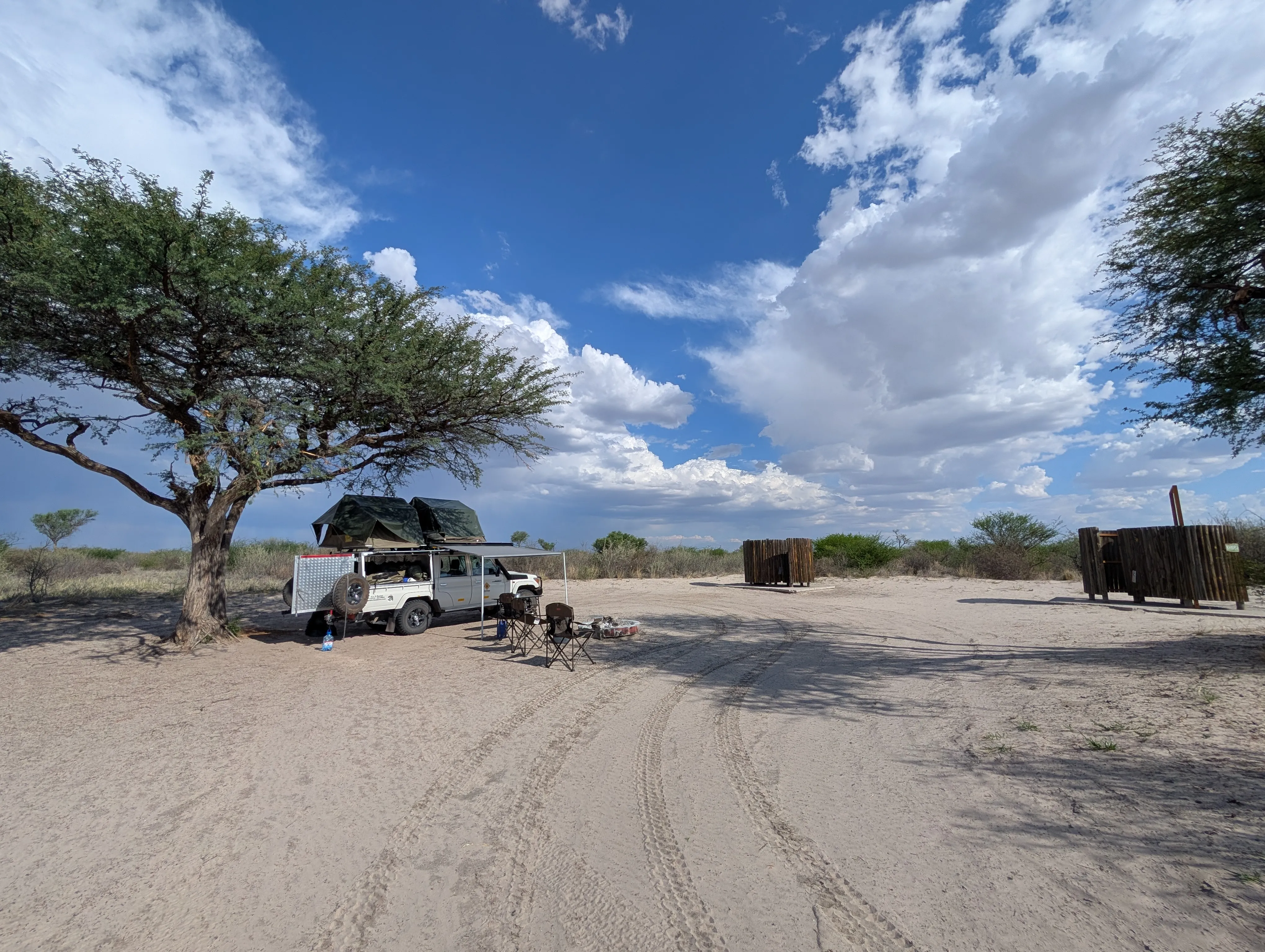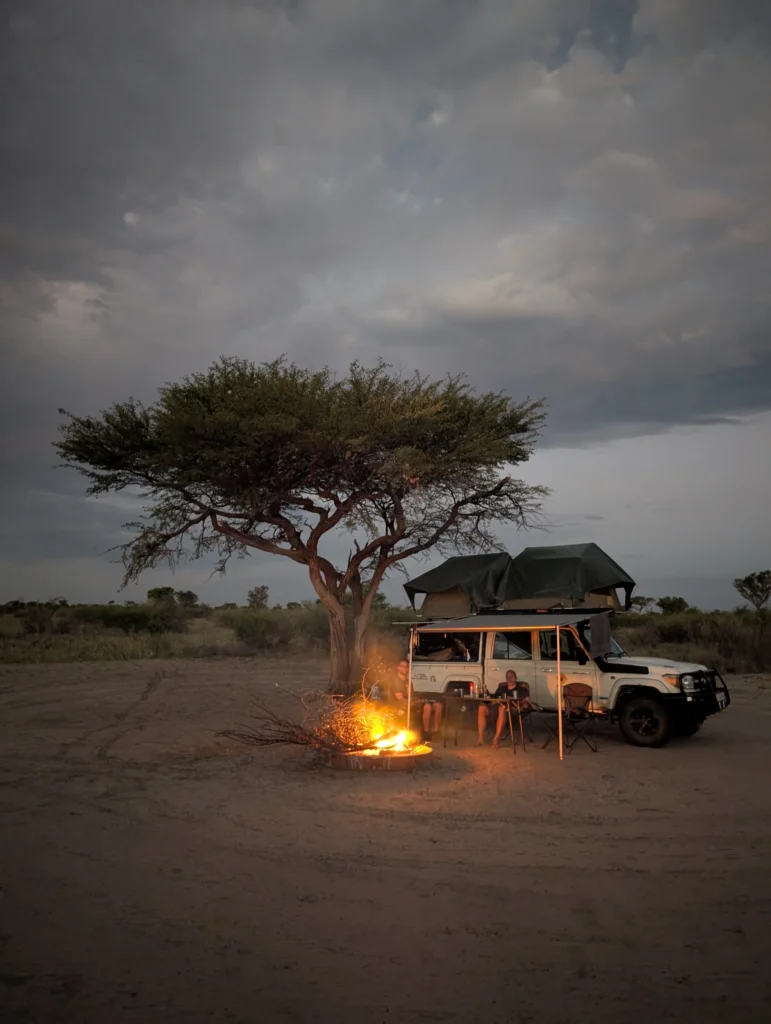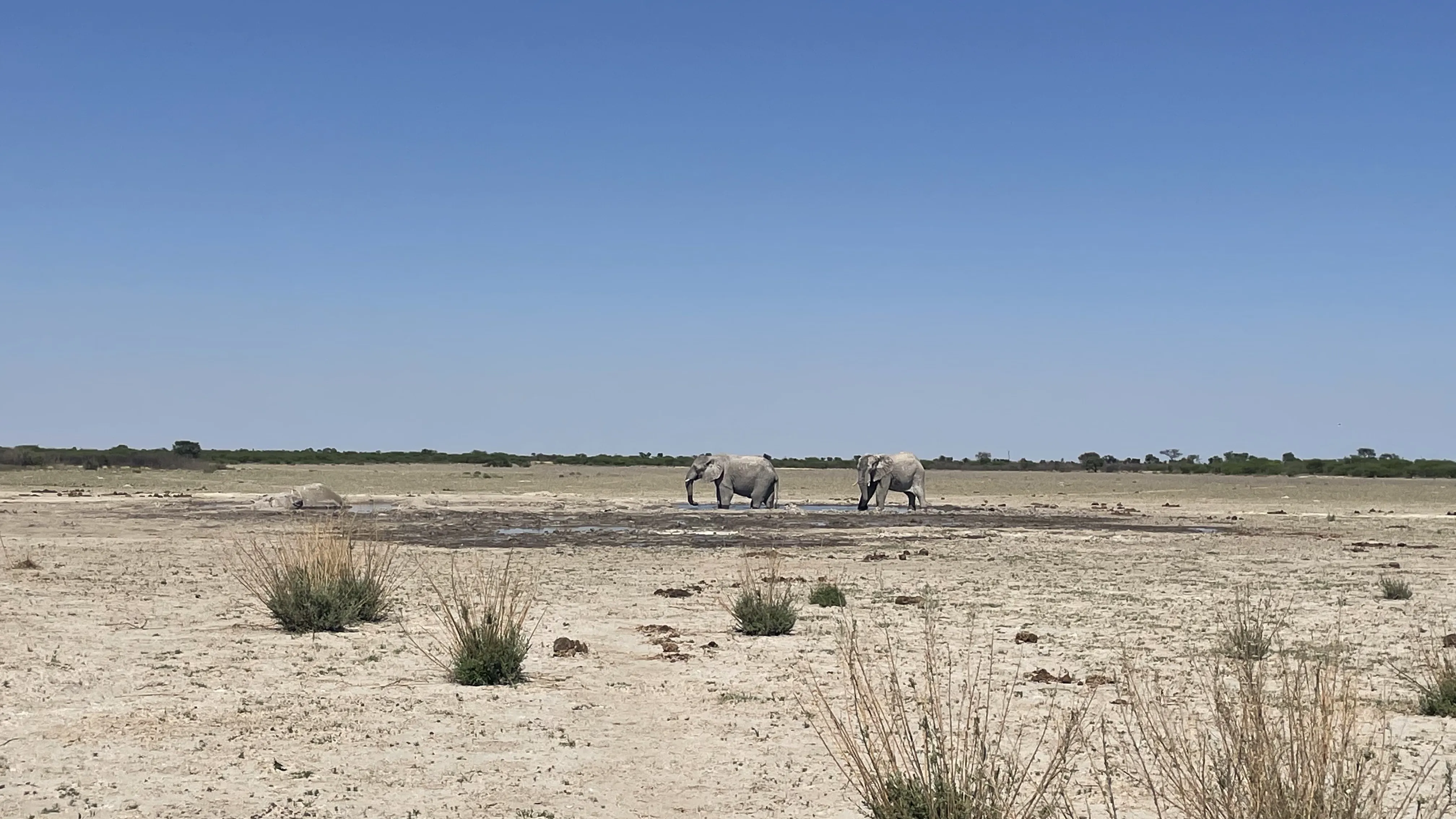On This Page
Introduction: Your Gateway to the True Kalahari
The Khutse Game Reserve (Botswana), located at the southern entrance of the massive Central Kalahari Game Reserve (CKGR), it’s not just a place to pitch a tent; it’s a proving ground.
From a systems perspective, Khutse is the final exam after the easy training modules of places like Botsalano Game Reserve. It forces you to get your inputs right: Water, fuel, food, tyre pressure because there are no safety nets. This guide will provide a practical, systems-driven breakdown of how to prepare for, book, and successfully execute a trip to this incredible piece of wilderness.

The Khutse System: Sand, Solitude, and Self-Sufficiency
Understanding the operational environment of Khutse is critical. The entire reserve is characterized by deep, sandy tracks. This is not a suggestion; it’s the fundamental reality of the place. Without a proper 4×4 and the knowledge of when to deflate your tyres (typically to 1.5-1.8 bar), you will get stuck.
Furthermore, there are no facilities. None. The campsites are simply designated clearings in the bush, some with a pit latrine and a fire pit. There is no running water, no electricity, no fuel, and no shop. The nearest town for resupply is hours away. This lack of infrastructure is not a bug; it’s the primary feature. It guarantees solitude and an authentic connection with the Kalahari ecosystem.
Choosing Your Campsite: A Strategic Breakdown of the Pans
Not all campsites in Khutse are created equal. Your choice will depend on your tolerance for remoteness and your desire for wildlife encounters. The campsites are clustered around several large, grassy pans.
Khutse Pan & Galagadi Pan: Best for Accessibility
Located closest to the main gate, these pans are the easiest to reach, but don’t let “accessible” fool you into thinking they are any less wild. We stayed at Khutse Campsite 2, right on the edge of the pan. At 2 AM, we were woken up by a deep, guttural roar that vibrated through the ground. The next morning, we saw the tracks—a large male lion had walked directly past our tent, just a few feet from where we were sleeping. It was a scary and humbling moment, and a powerful reminder that even the campsites closest to the gate are deep in the wilderness. This makes them an excellent option for a first night to ease into the reserve without sacrificing the chance for a major wildlife encounter.
Molose & Moreswe Pans: My Top Recommendation for Wildlife
If you want the best chance of hearing lions from your tent, my top recommendation is to book a site at Molose or Moreswe Pans. I stayed at Molose, and the experience was genuinely wild: we had a brown hyena circle our camp at dusk, followed by the deep roar of a male lion that felt incredibly close later that night. The solar-powered waterhole at Molose acts as a magnet for wildlife. Moreswe Pan, a bit further north, is just as legendary for its resident pride. For any serious wildlife enthusiast, the longer, sandier drive to reach these pans is absolutely worth it.
Khankhe Pan: Best for Extreme Remoteness
Located in the far north-eastern corner of the reserve, Khankhe (also known as Tshankhe) is for those seeking the ultimate in isolation. The drive is long and challenging, and you are unlikely to see another vehicle for your entire stay. It’s a true digital detox and a chance to experience the Kalahari at its most elemental.
A Step-by-Step Guide to Booking Khutse Game Reserve
Booking a campsite in Khutse can be a frustrating process, as it’s managed by the Botswana Department of Wildlife and National Parks (DWNP). You cannot simply book online in most cases.
- Plan Far in Advance: Campsites, especially during peak season (the cooler winter months), book out up to a year in advance.
- Contact the DWNP Directly: The official method is to contact the DWNP office in Gaborone via email or phone. You will need to specify your desired dates and campsites. Be prepared for a slow response. We got lucky by contacting Bigfoot Tours via e-mail and could book the campsite (reservations@bigfoottours.co.bw). Generally every booking in Botswana took weeks for replies.
- Use a Reputable Booking Agent: For a small fee, several Botswana-based travel agents can handle the booking process for you. This is often the most efficient and least stressful method. They have established relationships with the DWNP and can navigate the system much faster.
- Confirm and Carry Your Permit: Once booked and paid for, you will receive a reservation voucher. You absolutely must print this out and carry it with you. You will be required to show it at the park gate.

The Non-Negotiable Checklist: What You Must Bring
This is a system input list. Failure to pack any of these items can lead to a critical system failure.
- Water: A minimum of 5 liters per person, per day, for drinking, cooking, and washing. Plus an extra 20L emergency supply.
- Fuel: Your vehicle must have a full tank and, ideally, at least one full 20L jerry can. Driving in sand consumes significantly more fuel.
- Food: All of your food for the entire duration of your stay, plus at least two days of emergency rations.
- Recovery Gear: A spade, a tyre pressure gauge and compressor, and a high-lift jack. Knowledge of how to use them is mandatory.
- Communication: A satellite phone or a personal locator beacon (like a Garmin inReach). There is zero cell phone signal in the reserve.
- Firewood: You are not permitted to collect wood in the park. Bring your own, or purchase it in a town before you arrive.

Critical System Errors: Common Mistakes to Avoid
- Incorrect Tyre Pressure: This is the #1 mistake. Driving on deep sand with highway pressure will cause you to dig in and get stuck. Deflate to 1.5-1.8 bar as soon as you hit the sand.
- Underestimating Water Consumption: The Kalahari is incredibly dry. You will use more water than you think. The “5 liters per person per day” rule is not an exaggeration.
- Arriving After Dark: The tracks are difficult to navigate in daylight and become treacherous at night. Plan to arrive at your campsite with at least two hours of daylight to spare.
- Not Securing Your Camp: Unfenced means unfenced. Lions, hyenas, and jackals are curious. Store all food and rubbish inside your vehicle, and never leave shoes or other interesting items outside your tent.

Conclusion: The Verdict on Khutse Game Reserve
Khutse Game Reserve (Botswana) is not for everyone. If you are looking for comfortable facilities, guided game drives, or a swimming pool, this is not the place for you. It is a destination that demands respect, preparation, and a willingness to be truly self-reliant.
However, for the experienced self-driver, it represents one of the most authentic and rewarding wilderness experiences left in Southern Africa. It was the part of our 18-day overland journey that felt the most real and the most challenging. If you have the right mindset and the right equipment, Khutse will deliver an unforgettable adventure.
Frequently Asked Questions
Do you absolutely need a 4×4 for Khutse?
Yes. 100%. A 2WD vehicle will not make it past the first few kilometers from the gate. The tracks are deep sand. A high-clearance, low-range 4×4 is not a recommendation; it is a mandatory requirement for entry.
How do you book a campsite at Khutse?
You must book in advance, as you cannot pay at the gate. The official process is to contact the Botswana Department of Wildlife and National Parks (DWNP) directly via email or phone, but this can be slow. The most efficient method is often to use a reputable Botswana-based booking agent to handle the reservation for you. [CITATION_SLOT]
Is it safe to camp in an unfenced site like Khutse?
It is safe if you follow basic, sensible rules. The key is to understand that you are a visitor in the animals’ territory. Never sleep outside of your tent, store all food securely in your vehicle, and avoid walking around in the dark. The animals are generally not interested in humans, but they are attracted to food and curiosity.


